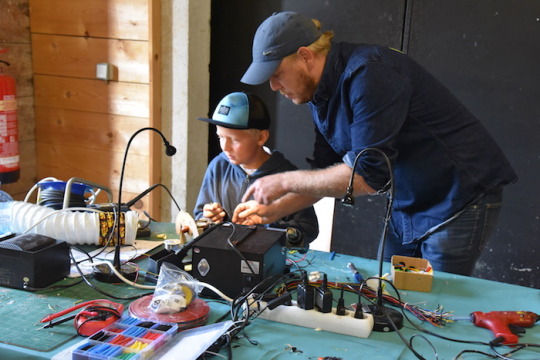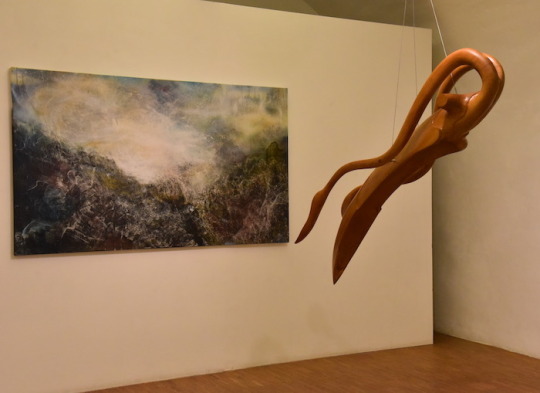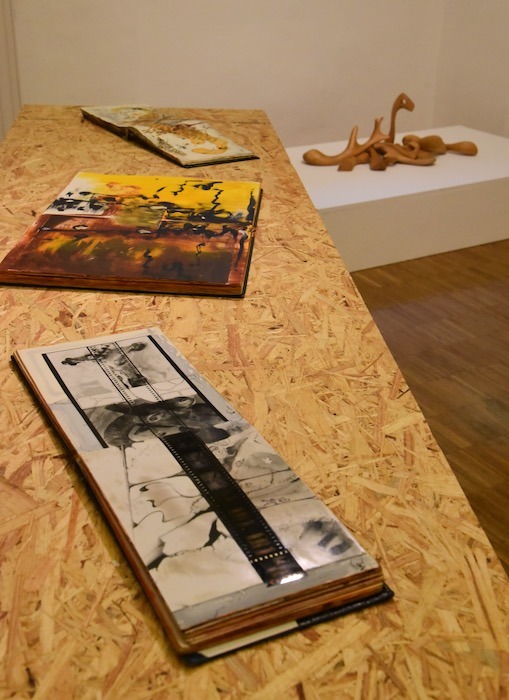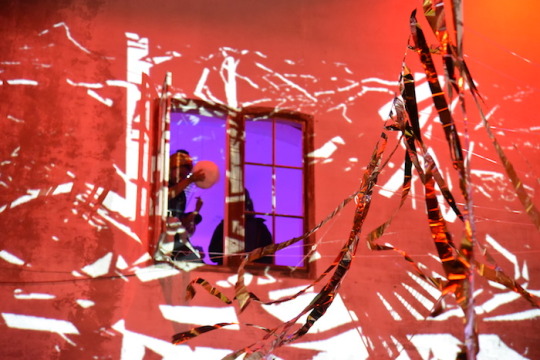#Bartholomäus Traubeck
Explore tagged Tumblr posts
Text
Translate Transform Bibliography
Bartbolomaus Traubeck. (n.d.). Years – Bartholomäus Traubeck. [online] Available at: http://traubeck.com/works/years [Accessed 14 May 2024].
Boddington, R. (2021). Gonzalo Menevichian’s short animation Time is a ‘contemplative and calm’ visualisation of a daydream. [online] www.itsnicethat.com. Available at: https://www.itsnicethat.com/articles/gonzalo-menevichian-time-animation-011021 [Accessed 14 May 2024].
Connelly, L. (2017). Infectious Pattern: Windows of London’s Wellcome gallery transformed with graphic exploration of disease. [online] Creative Boom. Available at: https://www.creativeboom.com/inspiration/infectious-pattern-windows-of-londons-wellcome-gallery-transformed-with-graphic-exploration-of-disease/ [Accessed 15 May 2024].
D’Efilippo, V. (2018). OddityViz — a tribute to David Bowie with data. [online] Medium. Available at: https://medium.muz.li/oddityviz-a-tribute-to-david-bowie-with-data-3566d3bd6bd8 [Accessed 15 May 2024].
Dring, D. (2017). Chromesthesia: Hearing and Seeing Sound In Colour | BeardedGMusic. [online] Bearded Gentlemen Music. Available at: https://beardedgentlemenmusic.com/2017/11/09/chromesthesia-seeing-sound-in-colour/ [Accessed 15 May 2024].
Dudenas (n.d.). Creative Coding ° 5. [online] dribbble.com. Available at: https://dribbble.com/shots/11258557-Creative-Coding-5 [Accessed 15 May 2024].
Estolas, G. (n.d.). Stoxart. [online] stoxart. Available at: https://www.stoxart.com/ [Accessed 15 May 2024].
Gorny, L. (2022a). How to make a music video for KH (Four Tet) in ten days using extinct coding software. [online] www.itsnicethat.com. Available at: https://www.itsnicethat.com/news/trevor-jackson-looking-at-your-pager-digital-100622 [Accessed 14 May 2024].
Gorny, L. (2022b). Listen (yes, that’s right, listen) to the new identity for Bergen’s culture and music centre. [online] www.itsnicethat.com. Available at: https://www.itsnicethat.com/news/reklamekollektivet-kulturhuset-identity-graphic-design-110322 [Accessed 15 May 2024].
Juul, M. (2015). Why the music of ‘Jaws’ is still terrifying. [online] www.boston.com. Available at: https://www.boston.com/culture/entertainment/2015/06/16/why-the-music-of-jaws-is-still-terrifying/ [Accessed 15 May 2024].
Kraning, S. (n.d.). Synesthesia Art by Sarah Kraning. [online] Synesthesia Art by Sarah Kraning. Available at: https://sarahkraning.com/ [Accessed 14 May 2024].
Lopez, N.H. (2022). How Common is Synesthesia? [online] Exceptional Individuals. Available at: https://exceptionalindividuals.com/about-us/blog/what-is-synesthesia-how-common-is-it/#:~:text=Chromesthesia%20is%20one%20of%20the [Accessed 14 May 2024].
Meyer, R. (2019). 100 Ways to Move an A. [online] Behance. Available at: https://www.behance.net/gallery/76803627/100-Ways-to-Move-an-A?tracking_source=search_projects_recommended%7Ckinetic+motion+graphics&log_shim_removal=1 [Accessed 14 May 2024].
Pentreath, R. (2021). What makes the Star Wars soundtrack so good? [online] Classic FM. Available at: https://www.classicfm.com/composers/williams/what-makes-star-wars-soundtrack-music-so-good-analysis/ [Accessed 15 May 2024].
Salisbury, M. (2024). Ludwig Göransson discusses his acclaimed ‘Oppenheimer’ score: ‘You want to feel what he feels’. [online] Screen. Available at: https://www.screendaily.com/features/ludwig-g%C3%B6ransson-discusses-his-acclaimed-oppenheimer-score-you-want-to-feel-what-he-feels/5189255.article [Accessed 15 May 2024].
Schimautz, J. (n.d.). Animation — Julia Schimautz. [online] juliaschimautz.com. Available at: https://juliaschimautz.com/Animation [Accessed 15 May 2024].
Stern, M. (2023). Composer: ‘Oppenheimer’ Score Goes Beyond What’s ‘Humanly Possible’. [online] Rolling Stone. Available at: https://www.rollingstone.com/tv-movies/tv-movie-news/oppenheimer-score-christopher-nolan-ludwig-goransson-atomic-bomb-1234790115/ [Accessed 15 May 2024].
TypeRoom (2017). Ran Zheng wants us to feel, look and hear typography in miraculous ways - TypeRoom. [online] www.typeroom.eu. Available at: https://www.typeroom.eu/article/ran-zheng-wants-us-feel-look-and-hear-typography-miraculous-ways [Accessed 15 May 2024].
TypeRoom (2022). JUNO X Arctic Paper: Munken Creator is generative typography’s playground to explore - TypeRoom. [online] www.typeroom.eu. Available at: https://www.typeroom.eu/juno-x-arctic-paper-munken-creator-generative-typography-creative-coding-munken-sans [Accessed 14 May 2024].
TypeRoom (2024). Typography’s uncharted territories: Rozi Zhu is here to push design boundaries forward - TypeRoom. [online] www.typeroom.eu. Available at: https://www.typeroom.eu/typographys-uncharted-territories-rozi-zhu-is-here-to-push-design-boundaries-forward [Accessed 14 May 2024].
www.patrik-huebner.com, P.H. (n.d.). Creative Coding • Patrik Hübner - Generative Design and Creative Coding for brands. [online] Patrik Hübner - Generative Design and Creative Coding for brands. Available at: https://www.patrik-huebner.com/datadesigndictionary/creative-coding/ [Accessed 15 May 2024].
0 notes
Text
Tuneful Trees
I recently stumbled upon this incredible project masterminded by German media artist Bartholomäus Traubeck…
Forget vinyl, Traubeck has created a turntable that plays slices of tree.
Instead of a pin passing over grooves, a microscopic camera scans the tree’s year-rings in a super smart and speedy fashion, gathering data that is then programmed to output as piano sounds.
Much like a record’s grooves, the year-rings of a tree hold the key to a whole lot of information. Not so alike is the fact that this info pertains to age, growth rate, environment, proximity to forest fires etc. ( - the study of all this fascinating stuff is called “dendrochronology”).
The nature of every individual tree’s year-rings is entirely different. Though within species and common climates similarities may be identified, for example the year-rings of a fast-growing fir tree will be very spaced out, while narrowing rings will be consistent among a group of trees that have lived through an unusually cold spell in their normal climate, still in no two organisms will the patterns form identically. The musical outcomes are consequently endless, but Traubeck has created a piece entitled “Years” out of a select few. Experience the entrancing result below:
vimeo
‘Years’ on Vimeo
Not everybody’s cup of tea I’m sure, but I’m in awe of Traubeck’s vision to shine a light on and explore these bona fide and epic databases that silently exist within nature. He’s giving form, voice and perceptibility to incredible living phenomena that for most of us would otherwise go unnoticed.
vimeo
‘Years - scratching’ on Vimeo - In this demonstration of Traubeck’s ingenious record player, you can clearly see how a knot in the tree’s year-rings affects the output of sound.
Talking about the development of his work, and of mixing technology and science with nature, I found the following words from an interview with Stuart B. Russel B.E.M., to be particularly thought-provoking:
“I think this dichotomy we tend to use is not the only model to think about the concepts of nature and technology. The lines blur the closer you look at them. How much of the human is natural anymore? Which parts of ‘nature’ are technology-influenced? We tend to think of people herding cattle in some alpine sheds as archaic and natural. But cows are actually a very recent introduction to the alpine landscape. I like how everything is evolving all the time and how you can easily break apart these concepts of what is natural, and what is labelled technology.”
“The process is kind of scientific but the outcome is not. I aim to make artworks after all. But to actually materialise a concept and try it in different approaches usually opens up new ideas which, for me, are not graspable in a purely theoretical stage.”
Traubeck has credited the cover art of Jethro Tull’s album Songs from the Wood as inspiration for his experimental turntable installation:

[Image source: http://tralfaz-archives.com/]
In other tree news:
During my recent trip stateside, I tracked down the the world’s largest tree with some of my family. The big guy’s called General Sherman - a giant redwood located in the Giant Forest (naturally) of Sequoia National Park. It’s so funny watching everybody try to take photos of it or better still of themselves-and-it… it’s nigh on IMPOSSIBLE to fit it all into the shot!
Case in point…

This was the most of the tree any of us got in one photo:

And of course, another trip, another classic-Milners-on-the-move anecdote to tell…
Having paid heed to the unmissable signage warning everybody of bear activity en route to the General, and followed instructions to lock all food and drink in metal cans or in the car boot and under no circumstances to carry any comestibles on our person during the relatively short hike to the tree, we set off. About half way in, and some hikers on their return trip gleefully informed us that there was currently a black bear just off the pathway about 50m away.
Mentioning no names….
“Um, okay”
“It’ll be fine, they must be used to people walking past”
“Oh yeah, look! I see it! It’s okay, it’s just minding it’s own business nibbling at that termite mound there.”
“Phew. And it’s not like we’ve got any better edibles on us to tempt it away.”
“Oh crap guys!! I’ve just realised I forgot I’ve got a bag of jelly babies and an entire box of Special K bars in my backpack!!!”
….We are now parallel with the bear…..
“WHAT?!? Right. Keep going…”
“If that bear so much as turns the smallest millimetre away from its termites you are ditching that backpack and we are out of here…”
“Ohmygodohmygodohmygod”
“I think it’s turning…”
“I think we’re going to die.”
“JUST GO”
…and, thankfully, we did live to see the tree and tell the tale. Do these things happen to other people as much as they happen to us?!
SuSo: “Coyote Caller” by Joshua James / https://open.spotify.com/track/0VfLSNN4WlqpAdWcgrhpgG - because it sounded SO great driving through the forested mountains of Sequoia & Kings Canyon National Parks.
References:
http://traubeck.com/years/
Interview - Bartholomaus Traubeck, Stuart Russell on behalf of Urban Times, pub. Feb 26, 2015 ( https://issuu.com/artsinfife/docs/bartholomaus_traubeck )
#tree#record#recordplayer#art#artist#bartholomäus traubeck#music#experimental#generalsherman#sequoia national park#giant forest#giant redwood#trees#joshua james#black bear#travel#anecdote
2 notes
·
View notes
Video
vimeo
YEARS | Bartholomäus Traubeck
“A record player that plays slices of wood. Modified record player, wood, sleeves. 2011″
5 notes
·
View notes
Photo
via Gridllr.com — a grid of your Likes!

As said by this IFL science article
Bartholomäus Traubeck created equipment that would translate tree rings into music by playing them on a turntable. Rather than use a needle like a record, sensors gather information about the wood’s color and texture and use an algorithm that translates variations into piano notes. The breadth of variation between individual trees results in a individualized tune.
SOURCE & LISTEN TO THE SONG
#As said#IFL science article#Bartholomäus Traubeck created equipment that would translate tree rings into music#playing them#turntable#Rather than use
55K notes
·
View notes
Link
1 note
·
View note
Video
vimeo
Years - Bartholomäus Traubeck A record player that plays slices of wood. Year ring data is translated into music, 2011. Modified turntable, computer, vvvv, camera, acrylic glass, veneer, approx. 90x50x50 cm.
0 notes
Video
vimeo
Two Axes in a Forest (Resonanz 1)
Bartholomäus Traubeck
Two Guitars play each other by inducing the sound signal of one guitar into the other via transducers, and vice versa. By looping both guitars through each other a state of perfect resonance is almost achieved. But since these two industrially manifactured objects are not completely alike, the frequencies never match perfectly and subtle shifts happen in the texture of the sound.
0 notes
Text
Es ist wieder Schmiede-Zeit: No Plan - Die Zukunft plant nicht

Die sechzehnte Ausgabe des MedienKulturFestivals Schmiede widmet sich also 2018 dem Thema „No Plan – Die Zukunft plant nicht“. Schmiede-Initiator Rüdiger Wassibauer erklärt das Jahresthema und warum es manchmal durchaus vorteilhaft ist, keinen Plan zu haben:
„Die Freude am Prozess kann mehr Kraft im Projekt und am Spiel produzieren, als die Sicherheit des Planes. Der Vorteil der Planlosigkeit ist, dass man im ersten Schritt entspannt und offen an Probleme herantritt und nicht vorauseilend für Möglichkeiten entscheidet, die vielleicht nie eintreten. Das heißt nicht, dass man nicht kontinuierlich an sich arbeiten soll. Im Prozess gilt es dann die Punkte zu finden wann, wo und wie ein Plan Vorteile birgt. Alles hier ist nicht so schwarz und weiß, wie wir es gerne hätten - aber das Leben ist Wandel und auch wenn das durchaus Ängstlichkeit verursacht, darf man sich nicht festkrallen sondern sollte die Flexibilität behalten, auf neue Gegebenheiten bestmöglich zu reagieren.“
Seit Ende August setzen über 250 Smiths (TeilnehmerInnen) aus Österreich, Deutschland, Schweiz, Italien, Frankreich, Spanien, England, den Niederlanden, Polen aber auch aus Übersee, nämlich Mexiko, Argentinien, USA, Australien mitgebrachte Projekte und Ideen um, indem sie neue Kreativ-Gemeinschaften bilden und Synergien entdecken. Performer treffen Ton-, Video- und MedienkünstlerInnen, ProgrammiererInnen arbeiten mit MusikerInnen über die Genregrenzen hinweg zusammen.
„Jeder hat seine eigene Schmiede,“ erklärt Rüdiger Wassibauer das Besondere an diesem zehntägigen MedienKulturFestival: „Manche kommen, um sich inspirieren zu lassen, manche um ihre angefangenen Projekte gemeinsam mit anderen Schmiede-TeilnehmerInnen fertigzustellen. Wir haben hier das kontrollierte Chaos, den Freiraum, wir haben Kooperationen zwischen Freunden, Fremden, mit Partnerinstitutionen – die Schmiede hat viele Gesichter, die sehr viel damit zu tun haben, was die Individuen aus den Gegebenheiten machen.“
Auch 2018 fand – noch vor der eigentlichen Schmiede - am 27. und 28.8. wieder das erfolgreiche Pendant für Kinder statt. Bei der MiniSchmiede trafen sich 18 Kinder aus Hallein und Umgebung in der Alten Saline und machten es wie die erwachsenen Smiths: Unter dem Motto „Wir spielen Zukunft“ entwickelten sie auf Teufel komm’ raus. Statt Handy, Laptop und Tablet standen Löten, Motoren und aus vom Do!Lab beigestelltem und selbst mitgebrachtem Elektronikschrott selbst gebaute Roboter im Vordergrund. Beim abschließenden Wettkampf, dem Hebocon, am 28.8. traten siebzehn DIY Roboter gegeneinander an.
Die Schmiede „für die Großen“ bot und bietet 2018 wieder ein vielfältiges, öffentlich zugängliches Programm: Eröffnet wurde das MedienKulturFestival auch 2018 im kunstraum pro arte: Am Mittwoch 29.8., ab 19.30 fand die Vernissage zur Ausstellung „Giovi - No Plan“ statt. Passend zum Jahresthema zeigt Johannes Löberbauer (Giovi) in diesem Jahr einen Querschnitt aus seinem reichhaltigen ?uvre der letzten Jahre. Nicht Bildschirme und interaktive Installationen sondern Gemälde und Skulpturen, also klassische Arbeiten sind in diesem Jahr zu sehen. Nicht Platinen, Bits und Bytes stehen im Vordergrund sondern Holz, Speckstein, Gips, Spachtelmasse, Eisenstaub, Kaffee sind die Materialien, mit denen Giovi aka Johannes Löberbauer experimentiert. Auf den ersten Blick ohne Plan eröffnet sich in den Arbeiten bei genauem Hinsehen eine sehr genaue Beobachtung der Natur und ihrer Strukturen und deren durchdachte Anordnung.
Am Donnerstag, 30.8. öffnete FUSUMA, das fliegende Teehaus ab 11.00 das erste Mal die Pforten. Es versteht sich als augenzwinkernde Parodie der japanischen Tradition der Teezeremonie. Hier wird aber nicht - wie man meinen möchte - Tee, sondern Kaffee zubereitet. Im Anschluss daran präsentierten sich die Labore des Jahres 2018: Neben altbekannten wie JamIsland, das zum traditionellen GameJam aufforderte, Tinkerlab – in diesem Jahr eine Kooperation von Do!Lab und subnet, StudioDREYLab und adhocLAB gab es wieder zwei neue: NASE von Bartholomäus Traubeck und Georg Scherlin setzt sich mit den Vorgängen in unserer Nase auseinander. In einer kleinen Destillerie werden natürliche Aromen, wie Tomate oder künstliche Duftstoffe wie C14, das einen Bestandteile von vielen Parfums bildet, extrahiert. Aber auch komplexe Duftgeschichten werden entwickelt, wie Waldspaziergang oder Sommerregen: Alles was vom feuchtem Asphalt aufnehmbar ist, wie Reifenabrieb, Staub wird aufgewischt und anschließend destilliert. Das Labor SUDHAUS, geleitet von Simone Seymer und Christopher Habersatter verfolgt das Ziel, Brücken zwischen den Halleiner Kulturinstitutionen und ihren Protagonisten zu bauen.
Nach den Laborpräsentationen waren die Schmiede-TeilnehmerInnen dran: Sie stellten einander ihre mitgebrachten Ideen, Fähigkeiten und Projekte vor – diese Vorstellungsrunde ist jedes Jahr der Ausgangspunkt, der Pool, aus dem alle Kooperationen der folgenden Tage entstehen. Der Abend klang mit der Vorstellung des umgesetzten Jahresstipendium für Medienkunst 2017 aus: Das Duo KLITCLIQUE präsentierte ihr erstes Album “Schlecht im Bett, gut im Rap“. Zwei freche selbstbewusste Frauen brechen ein in die Männer-Domäne Hiphop und erklären explizit, dass sie Spaß haben wollen.
Der Freitag, 31.8. stand im Zeichen der Mentoren der AKADEMIE HALLEIN, die im Rahmen der Inselgespräche „Zukunft plant nicht! oder Wieviel Plan braucht Erfolg?“ und dem anschließenden MentorenCafé zur Verfügung standen. Acht VertreterInnen aus unterschiedlichsten Tätigkeitsfeldern, Disziplinen, Berufen und Berufungen tauschten sich zum weiten Feld der Pläne aus: Warum machen wir Pläne? Wann und wie sind Pläne hilfreich? Wann ist es besser, einfach aufzubrechen? Bei den Vortragenden zählten außerberufliche Skills wie Extremsegler, Zen-Mönch, Afrika-Reisende mindestens ebenso viel wie berufliche Qualifikationen. Nicola von Greyerz (Grosses Ratsmitglied Schweiz), Christian Spath (Bestseller Autor), Julia Culen (Unternehmensberaterin), Paul Schmitzberger (Lobbyist Telekom Austria Group), Lionel Favre (Künstler), Michael Hackl (Schmiede-„Urgestein“, Berater), Henrike Brandstötter (Autorin und Politikerin) und Christian Mayhofer (Psychotherapeut und Zen Mönch) brachten ihre Sichtweisen ein. Moderiert wurden die Inselgespräche von den beiden Akademie-Initiatoren Bernhard G. Förg (Bestseller Autor) und Rüdiger Wassibauer (künstlerischer Leiter Schmiede Hallein). Die gesamten Inselgespräche 2018 wurden vollständig auf Video dokumentiert und bilden die Grundlage für ein Buch.
Am Samstag, 1.9. war subnet mit spannenden Vorträgen von Sebastian Hackenschmidt und Florian Kühnle rund um das Material zu Gast. Nach einem Streifzug durch das Material im Lauf der Kunstgeschichte des Abendlandes stand der „Prozess als Material“ in der digitalen Medienkunst im Vordergrund. Und am Ende des Tages stieg im Jugendzentrum Zone11 die SmithsWelcomeParty.
Am Sonntag, 2.9. war die Schmiede zu Gast bei der Halleiner Kulturinitiative Sudhaus. Am späten Nachmittag stellte das JamIsland Labor in den KG Freiräumen auch die Ergebnisse des diesjährigen GameJam vor. Am Montag, 3.9. öffnete die Schmiede die Tore für eine öffentliche Führung und Künstler Giovi stand abends im Rahmen eines ArtistTalks im kunstraum pro arte Rede und Antwort zu seinen Arbeiten.
Ab der Halbzeit der Schmiede steht nun weitgehend die intensive und ungestörte Arbeit an den Projekten im Vordergrund.
Der letzte öffentliche Programmpunkt am Dienstag, 4.9. SilentAIR widmet sich in Kooperation mit dem Stille Nacht Museum Hallein dem Stille Nacht Gedenkjahr 2018: Die Artists in Residence – denn dafür steht AIR - Eni Brandner, Vera Drebusch & Florian Egermann und Richard Eigner beschäftigen sich mit Fragen wie: Warum wirkt das Lied und dessen ewige Meta-Botschaft des Friedens so gestrig und der Realität entrückt? Welche persönliche Relevanz hat die Botschaft heute wie morgen, oder ist die Kraft des Liedes zum dekorativen Element im weihnachtlichen Ritual verkommen? Die Künstlerinnen und Künstler versuchen einen frischen Blick auf das Lied, die Geschichte sowie die vorhandenen Artefakte und Rituale zu werfen.
Den Abschluss der Schmiede18: No Plan bildet natürlich wieder die Werkschau. Am Freitag 7.9. ab 19.30 (Einlass ab 19.00) präsentieren die TeilnehmerInnen in der Alten Saline die Ergebnisse, die während des gemeinschaftlichen Arbeitens auf der Pernerinsel entstanden sind. Man darf schon gespannt auf die unterschiedlichsten Präsentationen sein – zu erwarten ist wieder ein Feuerwerk der Phantasie von Tanz über Performance bis hin zu aufwändigen Medienkunstinstallationen.







Fotos & Text: Gabriele Krisch
2 notes
·
View notes
Text
Natur Retour
Anna Artaker, Uwe Bressnik, Cpt Olf, Nestor Engelke, Bea Fremderman, Matthias Kessler, Antje Majewski, Christian Kosmas Mayer, Werner Nekes, Jessica Rinland, Sensory Ethnography Lab, Naoko Oriane, Bartholomäus Traubeck, Lois Weinberger
curated by Philipp Preuss
Humans appear in the world in the Holocene and this world is found a few stone segments later in the Anthropocene. A climate change evoked by industrialization and capitalist production and lifestyle, a nature changed by man also changes our view of this nature. The exhibition "Nature retour", which arose, among other things, from the study of Chekhov's "Uncle Vanya", attempts to illuminate the new perspective on time and history that arises through this new definition of nature. In Chekhov's play, there is the character of Dr. Astrow, who lucidly describes all the ravages on nature already for the 19th century, stating that "whoever treats people badly also treats the forests badly." Nature, society and politics and their harvest, that is history, is permanently connected, nature is time. Nature is a historiographer. In the case of the Korean artist figure Naoko Oriane even literally. She collected all her mother's old wristwatches for "Mother Watches" (2019) and puts them on a large tree trunk; the artist and musician Bartholomäus Traubeck also takes time as nature literally, in his work "Years" we hear the music of the annual rings of tree trunks, time set to music. By means of complex programming he composes wooden records from tree trunk discs. Parallel to this we see the congenial installation by Uwe Bressnik "Bressniks 1210": A DJ set made of twigs, barks, tree slices, forest berries, thus becoming a natural artifact. Russian artist Nestor Engelke uses an axe to carve out of wood archaic-looking sculptures of memory, as in his works "Tape," "Boombox" or "Portrait." The artist Christian Kosmas Mayer, on the other hand, seeks out ancient plants from the time machines of the icy tundra, which are awakening to new life as a result of climate change. In the work "The Life Story of Cornelius Johnson's Olympic Oak and Other Matters of Survival," he goes in search of an oak seedling given to African-American Olympic champion Cornelius Johnson by Adolf Hitler in 1936, and finds that oak in Koreatown, Los Angeles. Now tall, this oak now provides shade for Mexican and Korean immigrants. In a test tube, Mayer is cloning the Johnson oak for all eternity. Franziska and Lois Weinberger's early works explored the parallels of invasive plant species, transience, and migration. Be it in the "Portable Gardens" (1994) or in the Documenta work "Das über Pflanzen ist eins mit ihnen" ("That about plants is one with them"), in which Lois Weinberger sowed invasive, non-autochthonous plant seeds on tracks of the Kassel train station. The sculpture "Wild Cube," a steel cuboid that allows sprawl and wild growth in the well-coiffured Raffelberg Park, dialectically shows how territorialization enables de-territorialization, and enclosure enables de-limitation. In Chekhov, the character of Dr. Astrow is a conservationist avant la lettre, a "fighter against the murder of forests," as the character Sonja says in Thomas Brasch's translation. Today we are playing a piece of the past that negotiates a possible future - that is, our present, which is again thinking about its future. In her work "The Pencil of Nature" (2017), Austrian conceptual artist Anna Artaker shows natural prints of plants that could just as easily appear in W. H. Talbot's famous 1844 book of the same name. Talbot is the inventor of the photographic technique that made the printing of photographic negatives and thus the mass production of photographs possible. Artaker's nature prints seem historical, but they are absolutely current; the leaves are placed in lead for the technique, and the result resembles historical photographs, but nature's leaves have a longer shutter speed: they do not change at the rapid pace of technological evolution. Using means of somewhat cruel irony, Mathias Kessler recalls the 19th century: In his refrigerator installation, in addition to after-work beer in the icebox, there is also a 3D printed sculpture of Caspar David Friedrich's "In the Sea of Ice." In defrosting qua consumption, we experience the deconstruction of our romantic cliché of nature. Decay, decomposition, rotting is processual image and its own unit of time. Antje Majewski and Jessica Rinland approach the subject with a similar historical dramaturgy. Majewski shows affiches as background wallpaper from a book by her grandfather, who as a forester wrote about bark beetles and their danger to the forest. The forest, which still exists, is a hopeful legacy of his thoughts and phrases. Just as the book is a metamorphosis of a tree, her video is a metamorphosis of a memory. Similarly, Jessica Rinland's 16mm films "Not As Old As The Trees" and "The Pond" illuminate our natural theater. Using an anthropological-scientific film technique, she approaches people who themselves investigate nature in a documentary and scientific manner, free of any added value. Other works aim more into the thicket of politics: Cpt Olf lived together with the forest squatters of the Dannenröder Forest and documented their resistance against the clearing and how the forest squatters lived on and with the trees in solidary symbiosis. Antje Majewski also shows how people have complex relationships with trees. The video work "Trees and People" (2018) describes how people in China see old and very large trees like the Ficus microcarpa as connected to a god. At the same time, in the region of Guangdong, wood is increasingly becoming a secular commodity. Wood as a commodity is also explored by the film collective Sensory Ethnography Lab. Filmmaker Alexander Fattal traveled to the Brazilian jungle to document loggers, but during the filming of "Trees Tropiques" he had to increasingly question his own role as a filmmaker who also profits from the clearing of the rainforest. How do art and art production relate to nature? How to deal with the destruction? The future? One's own finiteness? Decay, putrefaction, rotting, rusting and fermenting is a processual image of time in nature, an intermediate stage of every metamorphosis and also its own natural timepiece. US artist Bea Fremderman demonstrates this in beautiful looking textile sculptures. She sows seeds in jeans, sweaters and socks. As beautiful as these objects are, they also remind us of our own fragile physicality and mortality: for all flesh, it is like grass. German avant-garde filmmaker Werner Nekes, in his 1974 film "Makimono," showed nature as purely cinematic or film as natural structure, as a permanent ongoing moment, without utilitarianism, without usability, without utility. Thus nature and art, that is, aesthetics, ultimately resemble each other in their radical utopian freedom of time and purpose. The forest becomes for us a place of the most beautiful uselessness - a heterotopia. Philipp Preuss/July 2021
0 notes
Video
youtube
A record player... one you have never seen before.
When I first saw this, I thought it was a joke... but no, not at all.... read the description below, it will make a lot more sense.
“HOW IT WORKS: Instead of a needle, an optical sensor reads the wood's color and texture. Then, algorithms convert those variations into notes on a scale, which is mapped to a piano synthesizer and played.
The rings of a trunk reveal the age of the tree, and environmental conditions like rainfall levels, disease, and even forest fires. Light-colored rings indicate growth spurts, while darker marks show times of a slowdown. Each slice is unique -- a glimpse into the story of a tree's past.
Bartholomäus Traubeck wondered what story those trees would tell. So he created equipment that could translate those rings into music on a record player. The result is a breathtaking masterpiece.”
57 notes
·
View notes
Link

I began by looking into the given research points to try and get a grasp of what this brief is about. This piece is by Bartholomäus Traubeck in which he has made a custom record player that plays the growth rings on tree slices. This is a really unique translation of natural growth and occuring patterns into sound and audio experience.
0 notes
Link

Translate and Transform - Re-visiting research prompts
When recommended to explore sound in the tutorial, it reminded me to go back to one of the first data visualisation maples from the brief about music made from tree rings. This is a great reminder of what you can do with sound and a lovely piece in itself.
0 notes
Text
Translate and Transform - Research
I wanted to have a closer look at the examples given to us during the briefing.
STOXART - turning stock market graphs into landscape illustrations.
I really loved this project, and I am definitely interested in working with illustration for this brief. I found the pieces really intriguing on their own, but when I realised there was more to them, it made them that much more interesting, and I can definitely see the appeal of getting these prints. This reminds me to try and stay away from infographics for this project, I think it should be something more arty and visual rather than focusing too much on representing data accurately.
https://www.stoxart.com


Infectious Patterns - Wellcome in collaboration with PATTERN
A graphic exploration of disease.
Inspired by the microscopic structure of bacteria and viruses, the patterns in which they spread infection, and the work of Wellcome in the fight against it, the displays incorporate 3D shapes, optical effects, bold designs and mesmerising animation.
It doesn't seem that they have really used a system to create the pattern, but were rather inspired by the nature of these bacteria/viruses and understanding of them, however, I really like the general idea of creating a pattern out of something whether that be emotion, data etc. I also really enjoy how they have visualised ideas of ‘contamination’ ‘spreading’ and ‘breaking out’ in the animation.
https://www.creativeboom.com/inspiration/infectious-pattern-windows-of-londons-wellcome-gallery-transformed-with-graphic-exploration-of-disease/



Bartholomäus Traubeck - Years
A record player that plays slices of wood. Year ring data is translated into music.
Personally, I think the idea of a piece of wood as a vinyl is beautiful enough on its own, but the entire project is incredibly interesting. I think it really meets this brief perfectly - he used a self-devised system to create something new (sound and the installation itself) out of something else (tree). I do however feel that the project breaks out of the scope of what I would be able to achieve and want to do within design. Nevertheless, it inspires to think outside of the box and is an awe-inducing piece of work.
http://traubeck.com/works/years
vimeo
Jonathan Safran Foer - Tree of Codes
Really like how he has taken a finished piece of literature and made it his own through carving away - reduction. In a way we all make books our own through the way we bend the spine, we might spill something on them, fold pages to keep our place and so on.
This seems like an incredibly tedious and pain-staking process but I like how the book has become a sculptural object, as well as now telling a new story.
https://vimeo.com/16851551


0 notes
Photo

When You Put Tree Rings on a Record Player, The Sound Is Unexpectedly Beautiful
What if the sounds of trees could actually be translated? Bartholomäus Traubeck has created something unique that would translate tree rings into music by playing them on a record player
0 notes
Video
vimeo
YEARS from Bartholomäus Traubeck on Vimeo.
4 notes
·
View notes
Link
0 notes